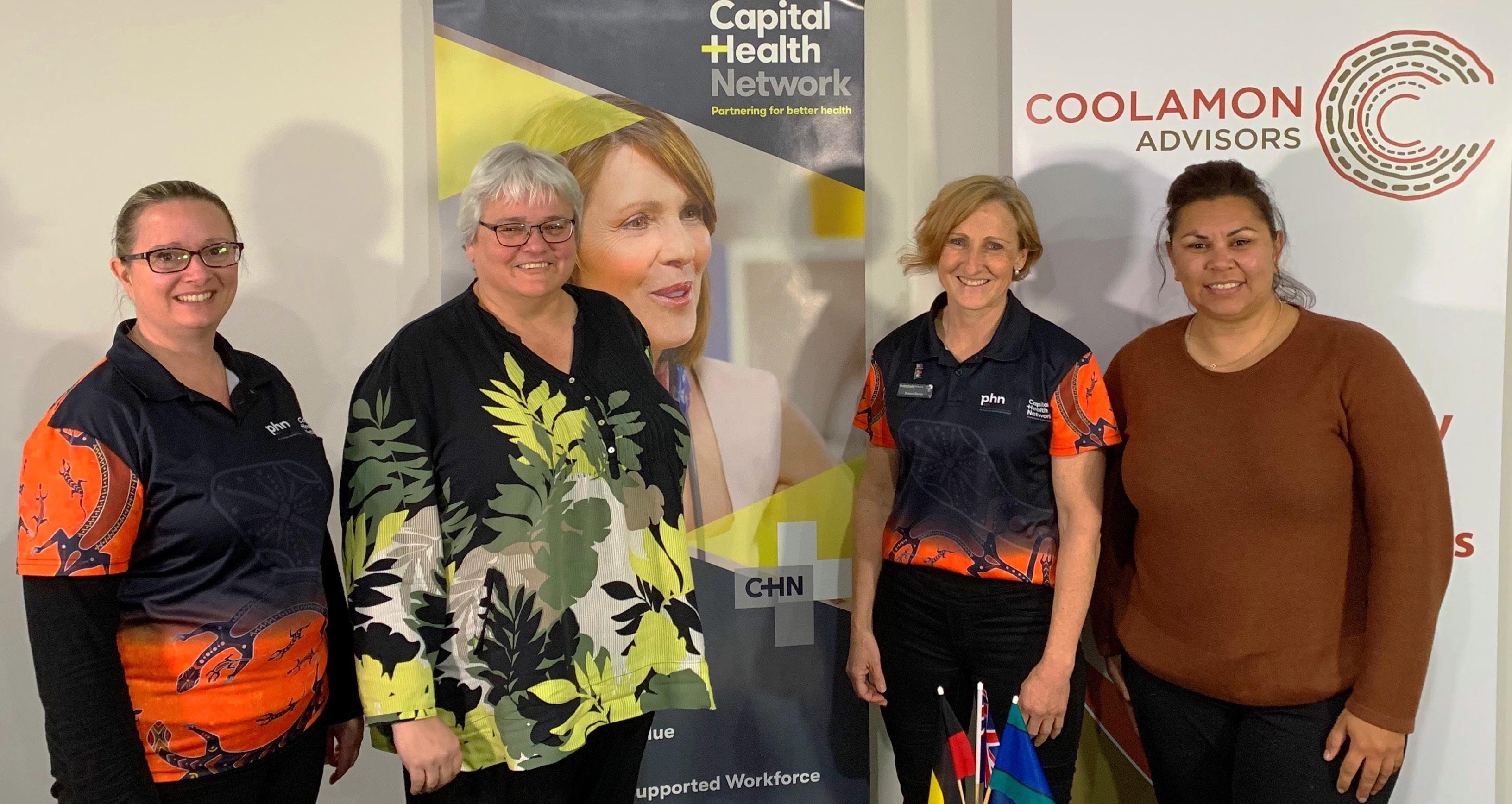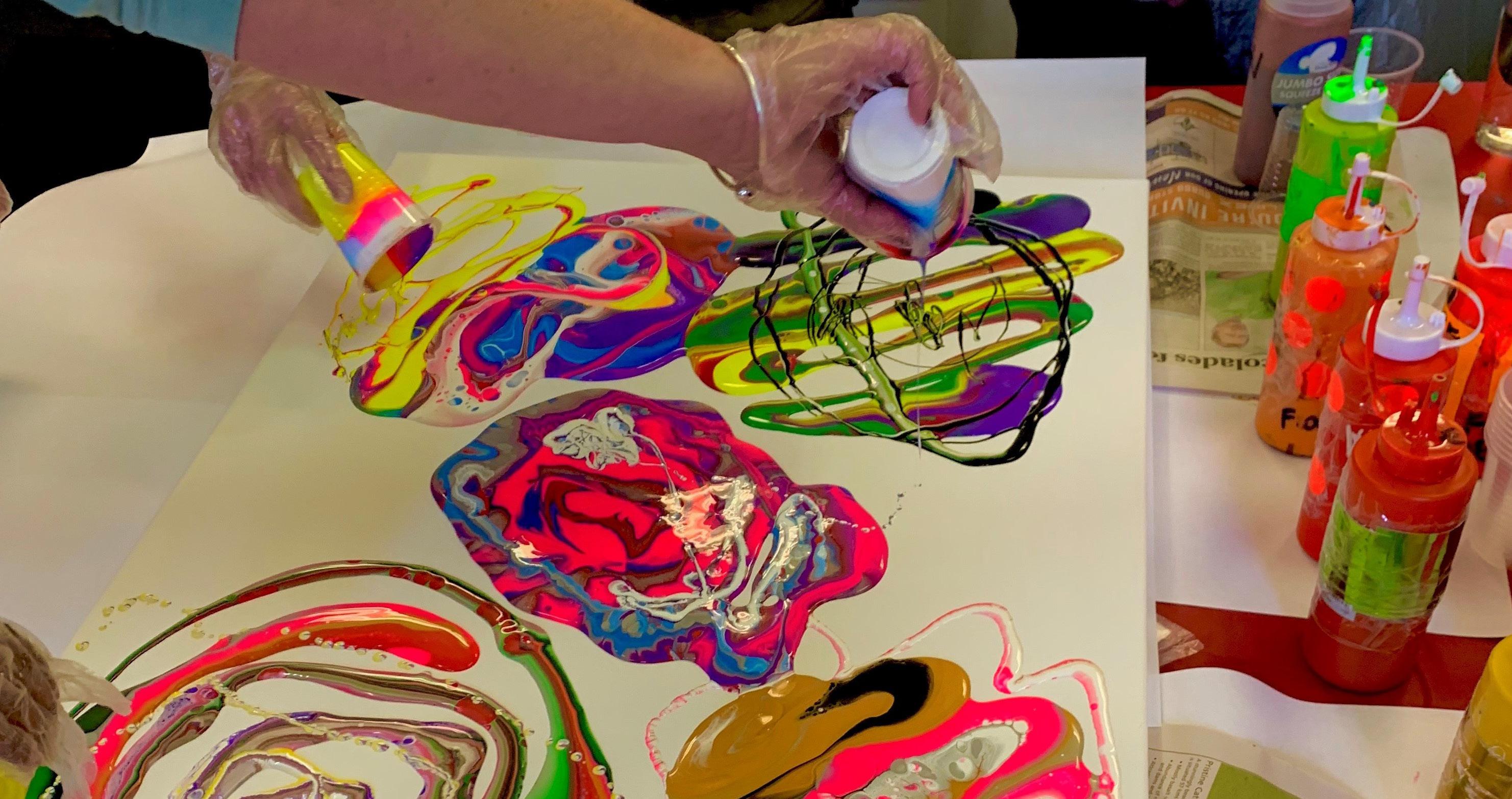
5 minute read
Supporting primary care and the health of First Nations people in the ACT
DR NAOMI HOUSTON Indigenous Health GP Advisor
SHARON STOREN Indigenous Health Officer, Capital Health Network
Advertisement
Canberra is Ngunnawal country. However, the ACT region is home for many Aboriginal and Torres Strait Islander peoples from different First Nations communities across Australia, making up about 1.8% of the ACT population. ACT’s Primary Health Network Capital Health Network (CHN) is committed to supporting the provision of culturally appropriate services to improve the health and wellbeing of First Nations people in the ACT.
Partnering for success
Partnerships are key to effective health service delivery. CHN has partnered with a number of local organisations to support the health of First Nations people in the ACT.
CHN funds local organisations through the National Indigenous Australian’s Health Programme to support First Nations people with:
• Chronic disease management — Grand Pacific Health and Winnunga Nimmityjah Aboriginal Health and Community Services deliver the Integrated Team Care Program which provides care coordination services and funding for certain approved medical equipment.
• Mental health issues — Marathon Health delivers a culturally sensitive, evidence-based mental health service for young First Nations people (under 25 years) to improve social and emotional wellbeing through one-on-one support.
• Alcohol and other drug (AOD) issues — Canberra Alliance of Harm Minimisation and Advocacy (CAHMA) provides the Peer Treatment Support Service to support clients to engage with necessary AOD service providers, enhance health literacy and access treatment. See case study.
CHN has also worked with local organisation, Coolamon Advisors, to co-design a Cultural Competency Framework to ensure collaboration with Aboriginal and Torres Strait Islander community members when planning, commissioning and evaluating programs and services.
Cultural Awareness Training
Coolamon Advisors also provides cultural awareness training for primary health care providers in the ACT, including service providers commissioned by CHN and CHN staff.
‘The free training provides insights into strategies for implementing a culturally safe health service including access (physical, financial, environmental, cultural), improving interpersonal relationships and communication, and culturally appropriate processes for assessment, referral, treatment and ongoing care,’ said Dr Naomi Houston, CHN Indigenous Health GP Advisor.
Guidance and education for general practice
CHN provides in-practice support and education for primary care providers to assist with the delivery of culturally appropriate services.
‘We tailor the sessions to the needs of each practice and cover topics such as identification of First Nations patients, MBS items and other government health incentives specific to First Nations people, and available referral options. We also work with practices to identify barriers for First Nations people in accessing health services and assist the practices with looking at ways to address these barriers,’ said Dr Houston.
Indigenous Health Officer, Sharon Storen explained that a suite of pathways for Aboriginal and Torres Strait Islander health has been recently updated and released through the ACT and Southern NSW HealthPathways Program which can be used to supplement the information in these sessions.
‘HealthPathways is a web-based clinical tool that provides health professionals with localised and evidence-based pathways that identify the assessment, management and referral options available locally across the ACT and Southern NSW. These pathways are developed by the PHNs, GPs, specialists and other local health care providers,’ said Ms Storen.
The suite of Indigenous-specific pathways range from the Practice Incentives Program — Indigenous Health Incentive, to the Pharmaceutical Benefits Scheme (PBS) Co-payment Measure to cultural competencies. The ACT and SNSW HealthPathways Program is a unique cross-border partnership involving ACT Health, Southern NSW Local Health District, COORDINARE (South Eastern NSW PHN) and CHN. Health professionals can find the details of how to access their local HealthPathways from their local Primary Health Network (PHN).
Expanded COVID-19 testing options
CHN provided advocacy and support for the establishment of three GP Respiratory Clinics to conduct COVID-19 testing in the ACT, including one at Winnunga Nimmityjah Aboriginal Health and Community Services which provides culturally appropriate testing for First Nations people and existing clients. CHN is providing ongoing support to the clinics which are funded by the Australian Government.
The CAHMA Community Centre is many things to many people…
People don plastic aprons, colourful paint mixes in tubs — blues, yellows, reds, all the colours of the rainbow. White canvasses are held in people’s hands and the centre buzzes with excitement. People greet, meet and re-meet as the leader explains the plan. When you feel the paint flowing and spreading, look into the picture it creates and talk to each other. That’s all. Just talk…

Sarah* is told about the CAHMA Art Group by another community member and decides to come along. She starts to talk to the other participants, which include members of the CAHMA staff who also enjoy creating and exploring. Sarah builds trust with a CAHMA Peer Treatment Support Worker, Belinda*, and together they decide to dig deeper and enter her into the CAHMA Peer Treatment Support Program. Sarah tells Belinda that she has attended a number of medical appointments (she was trying to get onto the opioid maintenance program) but has had no success for a variety of reasons. In particular she gets overwhelmed and anxious and finds the doctor’s language difficult to understand. She explains that she is tired and at the verge of giving up. Belinda understands intuitively because she has felt that same experience. She tells Sarah of her own experience and builds rapport and trust with her in a respectful manner to support her to try once again to get onto the program.
Sarah is transported and accompanied to another medical appointment by Belinda who is able to discuss issues and ask appropriate questions to ascertain why Sarah had been unable to receive treatment. In the appointment, Belinda explains the treatment options available to Sarah and discusses Sarah’s experiences and needs with the doctor. An understanding is formed between all three people that Sarah be placed on the right treatment option for her needs.
Belinda accompanies Sarah to pick up her medication daily and within five consecutive days of picking her medication up from the clinic Sarah is able to be successfully transferred to a pharmacy closer to her residence.
This was a successful outcome for Sarah who is now stabilised on her medication, has returned to her online studies and is currently seeking employment.
Sarah still has the painting she made that morning at the CAHMA Community Centre.










